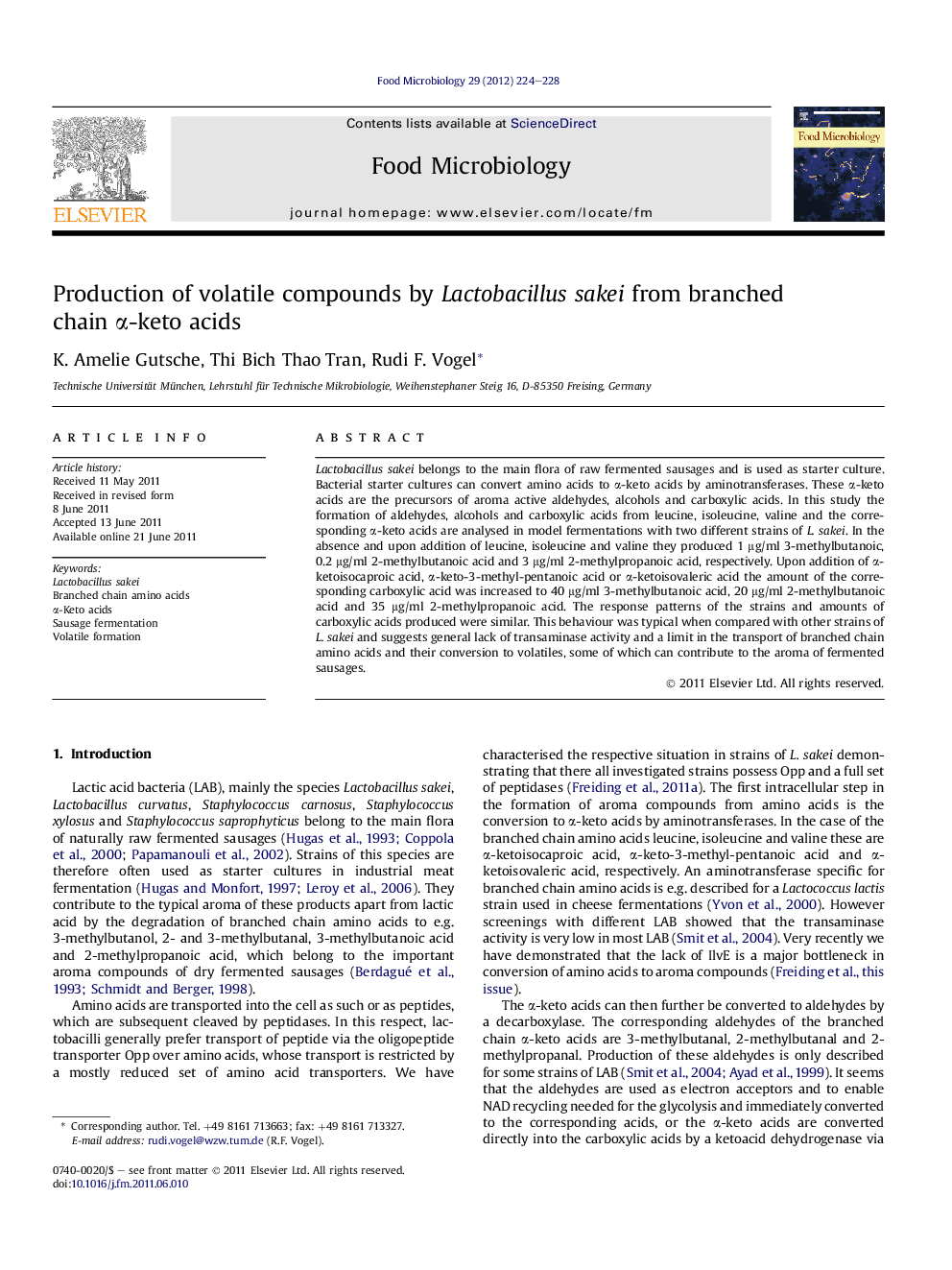| Article ID | Journal | Published Year | Pages | File Type |
|---|---|---|---|---|
| 4363083 | Food Microbiology | 2012 | 5 Pages |
Lactobacillus sakei belongs to the main flora of raw fermented sausages and is used as starter culture. Bacterial starter cultures can convert amino acids to α-keto acids by aminotransferases. These α-keto acids are the precursors of aroma active aldehydes, alcohols and carboxylic acids. In this study the formation of aldehydes, alcohols and carboxylic acids from leucine, isoleucine, valine and the corresponding α-keto acids are analysed in model fermentations with two different strains of L sakei. In the absence and upon addition of leucine, isoleucine and valine they produced 1 μg/ml 3-methylbutanoic, 0.2 μg/ml 2-methylbutanoic acid and 3 μg/ml 2-methylpropanoic acid, respectively. Upon addition of α-ketoisocaproic acid, α-keto-3-methyl-pentanoic acid or α-ketoisovaleric acid the amount of the corresponding carboxylic acid was increased to 40 μg/ml 3-methylbutanoic acid, 20 μg/ml 2-methylbutanoic acid and 35 μg/ml 2-methylpropanoic acid. The response patterns of the strains and amounts of carboxylic acids produced were similar. This behaviour was typical when compared with other strains of L. sakei and suggests general lack of transaminase activity and a limit in the transport of branched chain amino acids and their conversion to volatiles, some of which can contribute to the aroma of fermented sausages.
► Conversion of branched chain amino acids was investigated in Lactobacillus sakei. ► L. sakei preferentially produced oxidized compounds over aldehydes and alcohols. ► Addition of α-keto acids increased formation of carboxylic acids up to 20 fold.
